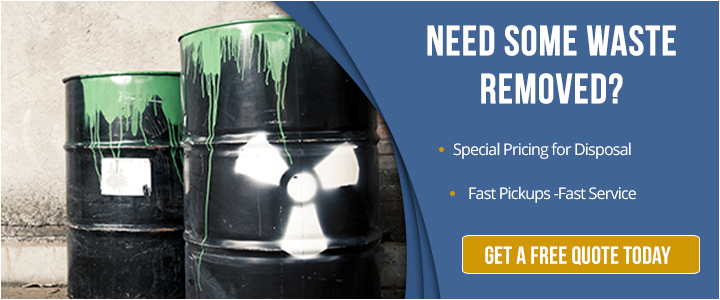Energy efficiency is at the top of many manufacturers’ minds as they look for ways to cut costs and increase sustainability.
The bad news is that manufacturers in the United States aren’t faring so well. According to a report by Energy Central, the United States holds the top spot for energy waste. According to the U.S. Energy Information Administration, the United States is a highly industrialized country, and the industrial sector accounts for 36% of total U.S. end-use energy consumption.
The good news is that manufacturers have many opportunities available to reduce their energy consumption and improve the sustainability of their operations. Manufacturers can help stop energy waste by:
- Examining their energy usage
- Making small changes first
- Consider all the ways their processes impact energy consumption
Examine Energy Usage
While ignorance is bliss, it can be costly. Most manufacturers don’t set out to use as much energy as possible, and doing so would be extremely expensive and hurt their bottom line.
manufacturers don’t set out to use as much energy as possible, and doing so would be extremely expensive and hurt their bottom line.
However, manufacturing plants often waste large amounts of energy without realizing it. To stop energy waste, manufacturing companies should take a closer look at their equipment, examining it for efficiency. Plant operators should also examine other sources of high energy consumption, such as:
- Computer usage
- Lighting
- Break room appliances
- Datacenter storage areas
- Heating and cooling costs of the plant
- Air filters, which when dirty can impede airflow in HVAC systems
- Compressed air systems that can have leaks
It’s also important to check whether your equipment is on a regular maintenance schedule, and whether that schedule is being followed.
Make Small Changes First
If your plant managers evaluate many of the items listed above, they’ll likely come across some areas of your operations that could use improvement.
Making small changes to your energy usage can collectively have a big impact. Taking this next step toward reducing energy waste will also get the ball rolling and put you on a more productive path toward improving your company’s overall sustainability.
Here are 5 smaller ways to reduce energy waste in your facility:
1. Install energy-efficient lighting
Using energy-efficient lighting can save substantial costs and reduce electricity waste. Industrial compact fluorescent light bulbs or light-emitting diodes (LEDs) are great choices to help businesses reduce their energy usage.
reduce electricity waste. Industrial compact fluorescent light bulbs or light-emitting diodes (LEDs) are great choices to help businesses reduce their energy usage.
However, there are a couple of additional ways you can improve energy usage when it comes to lighting. Ensure employees turn off lights when not using them, or install motion detectors to shut off the lights when employees leave the room.
2. Use Equipment With Energy Star Ratings
Energy Star appliances and IT equipment are designed to use less energy. Various types of equipment carry this rating, from audio/visual equipment to displays, imaging equipment, small networking equipment, power supplies, televisions, computers and breakroom appliances like refrigerators and dishwashers.
Energy Star appliances alone will save a company 10% to 50% of the energy required to operate the equipment, depending on the model.
3. Power Down Equipment
While many manufacturing facilities operate 24 hours a day, some only run for one or two shifts. Shutting down equipment at the end of each shift when there will be a gap in time before it needs to be back up and running can help save substantial energy usage.
This step should also include heating components in cold-weather markets. Space heaters are used in certain areas to supplement a facility’s HVAC system at some facilities. When rooms are unattended, employees should deactivate the heaters.
4. Take A Closer Look At Consumption Periods
Electrical rates can vary depending on the time of day. During high-usage times, energy consumption can also increase because of the pressure widespread usage is putting on the power grid.
By scheduling operations during off-peak-demand hours, factories can reduce energy consumption and save money.
5. Get Employees To Buy-In
You may have well-laid plans to reduce energy consumption, but you’ll need your employees' help to accomplish them.
Communicate with your workers the importance of reducing energy waste. Your employees, who know your equipment and operations best, may even have ideas on how the company can save.
Be sure to show them the benefits of buying in to this strategy. Not only are they good stewards of the environment, but your workers may see benefits as well, such as equipment upgrades or raises with costs saved.
Consider The Ways Your Processes Impact Energy Consumption
It’s easy to focus on your manufacturing facility’s impact on energy consumption. After all, what happens at your facility is something you have direct control over and can change.
energy consumption. After all, what happens at your facility is something you have direct control over and can change.
But what about what doesn’t happen at your facility?
The waste your facility generates is the perfect example of this. Whether it’s wastewater, solid waste or hazardous waste, your waste must go somewhere and be treated … and the treatment of that waste before it can be disposed of uses a substantial amount of electricity.
For example, municipal wastewater treatment plants consume an estimated 30 terawatt hours or more per year of electricity. According to the U.S. Department of Energy, this equates to about $2 billion in annual electric costs.
The transportation for that waste also uses a substantial amount of fuel, and energy is used to refine gasoline. However, many companies often overlook an important resource that they have at their disposal to help them evaluate how they can improve the impact their waste management practices have on the environment.
That resource is the hazardous waste company itself. Hazardous waste disposal companies that offer a walk-through program can evaluate your waste procedures to ensure they are environmentally friendly and help you look for ways to reduce waste. They can also work with you to determine where you want your waste sent and by which method you wish to have it disposed of in order to align with your waste management and sustainability goals.
It’s important to note that a walk-through is NOT an audit of your operations. Instead, this program is consultative in nature and helps ensure you are operating in compliance with state and federal laws. In other words, it’s a collaborative effort to determine what potential issues need to be addressed to help you reach your goals.
Your Impact On Energy Waste
Whether your company is ready to make small or large changes to reduce your energy waste, there are solutions available to you.
Some involve simple changes like switching lightbulbs or replacing outdated equipment with machines that run more efficiently.
In some cases, reducing your energy waste involves looking at your company, such as your waste management practices. In other cases, it involves taking a look at your company’s impact even after your products or waste leave the facility. Just like a carbon footprint, your company’s impact reaches far beyond your facility’s walls.


Comment